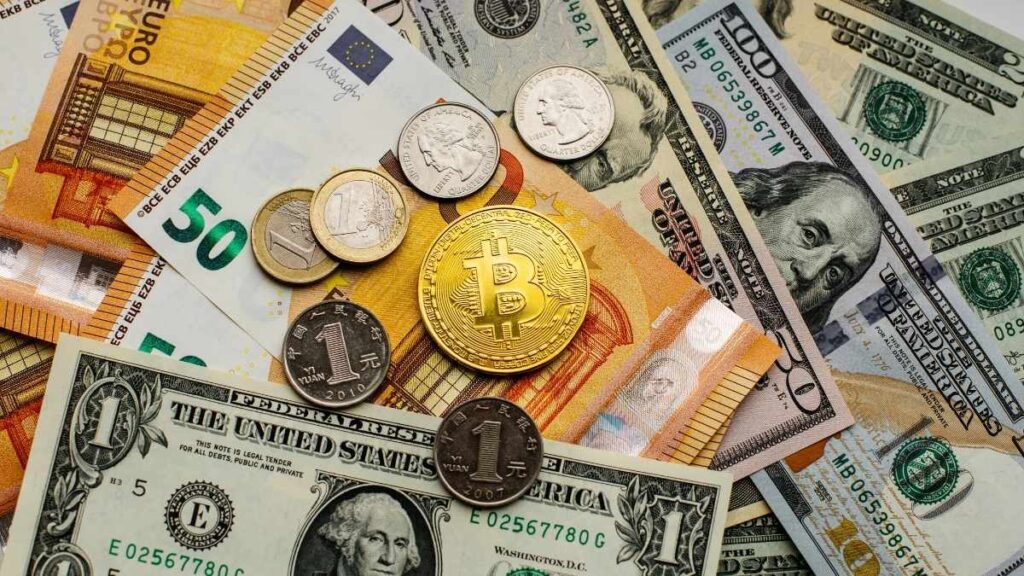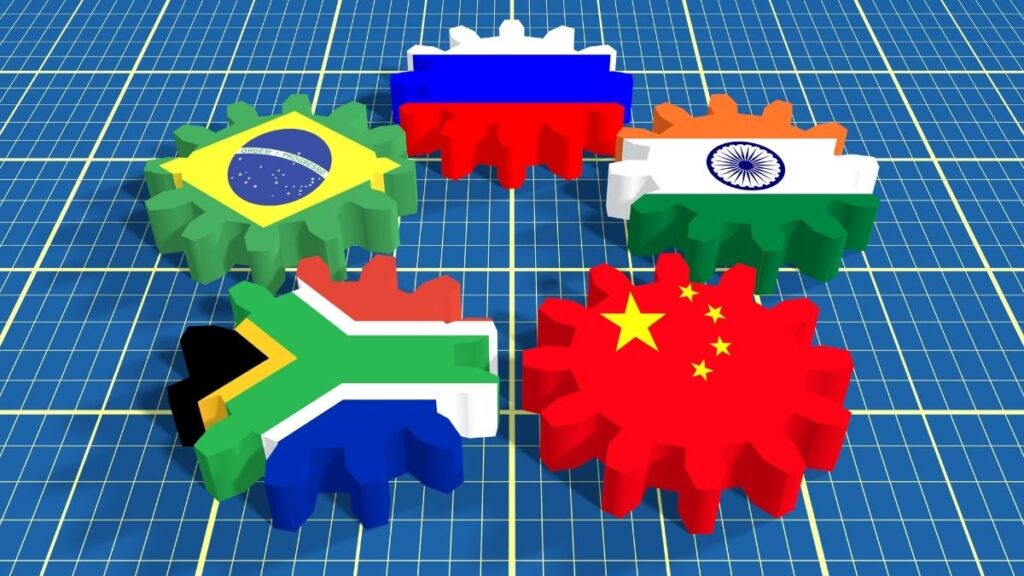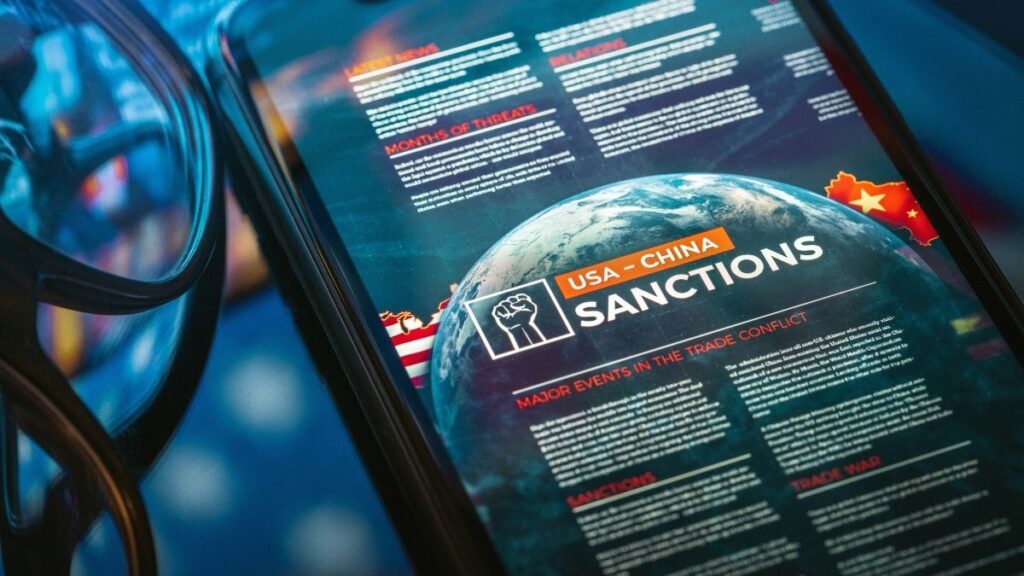The global financial system is undergoing a fundamental, though gradual, transformation.
This is not a speculative forecast of the US dollar’s imminent collapse, but an evidence-based analysis of a structural shift driven by three interlocking forces: the strategic consolidation of the BRICS+ bloc, the development of alternative financial technologies, and the unintended consequences of Western economic statecraft.
While headlines often focus on overt geopolitical conflicts, a quieter and arguably more consequential currency war is underway. This contest is being fought not on traditional battlefields, but on distributed ledgers, in the reserve statements of central banks, and through the protocols of cross-border payment systems.
1. The Coalition of the Unwilling: BRICS+ and the Geopolitics of De-Dollarization

The movement to build alternatives to the dollar-based financial system is underpinned by a powerful geopolitical realignment.
The BRICS+ bloc has evolved from a loose economic acronym into a formidable coalition, not as a monolithic entity, but as a group of diverse nations with a converging strategic interest in enhancing their economic sovereignty and insulating themselves from external financial pressures.
From Economic Club to Geopolitical Force: Quantifying the New Center of Gravity
The expansion of the BRICS group in 2025 marks a pivotal moment in its evolution. The formal accession of Indonesia, Saudi Arabia, Egypt, Ethiopia, Iran, and the United Arab Emirates has brought the bloc’s full membership to eleven nations, complemented by a new tier of ten “Partner Countries” including Malaysia, Nigeria, and Thailand.
This expansion is far more than symbolic; it establishes a new center of economic gravity with the critical mass to create a self-sustaining ecosystem.

Collectively, the BRICS-11 now represents approximately 48.5% of the global population and accounts for over 40% of global GDP when measured by purchasing power parity (PPP).
This scale is strategically significant. The inclusion of the world’s largest energy producers—Saudi Arabia, the UAE, and Iran—alongside major energy consumers like China and India, creates a powerful internal energy market.
The Sanctions Catalyst: How Dollar Weaponization Became a Unifying Force
A primary driver unifying this diverse coalition is the increasing use of the US dollar and the SWIFT messaging system as instruments of foreign policy.
The imposition of unilateral sanctions by the United States and its allies, most notably the freezing of approximately $300 billion in Russian central bank reserves in 2022, served as a profound wake-up call for the Global South.

Consequently, the push for de-dollarization has become a matter of strategic national security for many nations. The objective is less about launching a direct assault on the dollar and more about constructing a resilient alternative financial architecture that can operate independently of Western control.
By developing parallel payment systems and promoting trade in local currencies, member states aim to mitigate their vulnerability to what they view as economic coercion and enhance their economic sovereignty.
A Fractured Consensus: The Pragmatic Retreat from a Single Currency
Despite the shared goal of reducing dollar dependency, the initial and highly publicized idea of a single, unified BRICS currency has been quietly shelved in favor of more practical and achievable goals.
The July 2025 BRICS Summit in Rio de Janeiro confirmed that “no joint currency would be launched in the near term,” reflecting a pragmatic consensus among members. This shift is evident in the public statements of key leaders.

Russian President Vladimir Putin, once a vocal proponent, significantly softened his rhetoric in late 2024, stating, “it is too early to talk about this… We have not sought to abandon the dollar”.
This change in tone is widely seen as an attempt to de-escalate financial tensions, particularly with a potentially more aggressive US administration. Similarly, India has consistently expressed caution.
In March 2025, External Affairs Minister S. Jaishankar articulated his country’s position clearly: “I don’t think there’s any policy on our part to replace the dollar.
2. Forging New Rails: The Technological Architecture of a Parallel System
A New Economic Center of Gravity
The BRICS bloc (Brazil, Russia, India, China, South Africa) and its potential new members represent a formidable economic force, possessing the scale to challenge the existing financial order.
Share of Global Population
BRICS nations are home to over 42% of the world’s population, creating vast domestic markets and a massive labor force.
Share of Global GDP (PPP)
The bloc now accounts for a larger share of global GDP (at purchasing power parity) than the G7, contributing to nearly 50% of global economic growth.
Share of Global Trade
With over 18% of global trade and rapidly growing internal commerce, the economic integration within BRICS is deepening.
The geopolitical ambitions of the BRICS+ bloc are being enabled by the development of sophisticated financial technologies designed to create a viable, non-dollar-based infrastructure for global trade and finance.
Two projects, Project mBridge and BRICS Pay, represent a comprehensive, two-pronged strategy to build a full-stack alternative to the Western-centric system.
Project mBridge: The Wholesale CBDC Superhighway
Project mBridge is a groundbreaking initiative to facilitate wholesale cross-border payments using central bank digital currencies (CBDCs). It is not a BRICS project per se, but its key participants and strategic implications are deeply intertwined with the bloc’s objectives.
The platform is built on a custom-designed Distributed Ledger Technology (DLT) known as the mBridge Ledger (mBL), which utilizes smart contracts written in the Solidity programming language and a Byzantine Fault Tolerant consensus algorithm.

The project is a collaboration between the Bank for International Settlements (BIS) Innovation Hub and the central banks of China, Hong Kong, Thailand, and the United Arab Emirates. It reached a critical milestone in mid-2024 by achieving Minimum Viable Product (MVP) status, with commercial banks now actively conducting real-value transactions on the platform.
The most strategically significant development, however, was the decision by the Saudi Central Bank to join as a full participant in mid-2024, a move that fundamentally alters the project’s geopolitical weight.
BRICS Pay: The Vision for a SWIFT Alternative
While mBridge provides a top-down, wholesale solution for central banks and large financial institutions, BRICS Pay represents the longer-term, bottom-up ambition to create an alternative for retail and business-to-business transactions.
The vision is to build a decentralized, blockchain-based platform that links the existing national fast-payment networks of member states, such as India’s Unified Payments Interface (UPI), China’s Cross-Border Interbank Payment System (CIPS), Brazil’s Pix, and Russia’s System for Transfer of Financial Messages (SPFS).

The platform is intended to support a wide range of transactions, from retail payments via QR codes and digital wallets to eventual integration with national CBDCs.
A key feature is its proposed decentralized Cross-border Messaging System (DCMS), which is designed to operate without a central owner or hub, making it inherently resistant to external control or sanctions.
However, the project’s complexity is immense. Despite early speculation, BRICS Pay is not yet live and remains “under development”. At the July 2025 summit, officials clarified that the target for full operational status has been extended to 2030, though a pilot could emerge before the end of 2026.
3. The Data Behind the Disruption: A Reality Check on De-Dollarization in 2025
The strategic shift towards a multipolar currency system is not merely theoretical; it is reflected in a growing body of empirical data. From the composition of central bank reserves to the currency of trade settlement, the evidence points to a slow but steady erosion of the dollar’s once-unquestioned dominance.
Shifting Reserves and Trade Flows
A clear indicator of this trend is the changing composition of global foreign exchange reserves. As of April 2025, the US dollar’s share of allocated reserves has fallen to approximately 58%, a two-decade low.
In parallel, central banks, particularly within the BRICS bloc, have become aggressive buyers of gold as a politically neutral store of value. In the first quarter of 2025 alone, central banks collectively added 483 tons of gold to their reserves, with Russia now holding 24% of its total reserves in the precious metal.

This diversification away from holding US debt is mirrored in trade settlement. Intra-BRICS commerce conducted in local currencies has surged. Data released at the July 2025 summit claimed that approximately 90% of trade among member nations is now settled without the US dollar, a figure heavily influenced by the massive Russia-China energy trade.
More conservative and independent estimates suggest that nearly half of all intra-BRICS trade is now conducted in local currencies, a significant increase from just a few years ago.
This concurrent shift in both reserve holdings and trade settlement patterns indicates a deliberate, strategic move to reduce dependency on the dollar.
The Yuan’s Ascent as the De Facto Alternative
Within this emerging non-dollar ecosystem, the Chinese yuan (CNY) is solidifying its position as the primary alternative currency. The yuan’s share of global foreign exchange trades climbed to 8.5% by September 2025, a notable increase from 7% in 2022.

Its role is even more pronounced within the BRICS bloc, where the renminbi reportedly accounts for roughly 50% of intra-bloc trade settlement. However, while the yuan is the de facto anchor for the de-dollarization movement, it is not yet a true global competitor to the dollar.
Comparative Economic Clout: BRICS+ vs. G7
The growing momentum behind the de-dollarization movement is backed by a fundamental shift in global economic power.
The expanded BRICS+ bloc now represents a larger share of the world economy than the G7, a reality that underpins its ability to challenge the existing financial order.
The Shifting Global Economic Balance Sheet (2025 Projections)
| Metric | BRICS-11 Bloc | G7 Bloc | Strategic Insight |
| Share of Global GDP (PPP) | ~40.7% | ~28.4% | The BRICS+ bloc has decisively surpassed the G7 in economic output (PPP), signaling a fundamental shift in the world’s economic center of gravity. |
| Share of Global Population | ~48.5% | ~10% | Represents a vast, growing consumer market and labor force that will drive future global demand and production. |
| Contribution to Global GDP Growth (2015-2025) | ~54.5% | Significantly Lower | The bloc is the primary engine of global economic expansion, making it an indispensable partner for any nation or corporation seeking growth. |
| Control of Global Oil Production | ~44% (Incl. Saudi, Russia, UAE, Iran) | ~20% (Mainly US, Canada) | Unprecedented concentration of energy power, providing critical leverage for pricing key commodities outside the dollar system. |
4. The Sanctions Feedback Loop: A Russia-China Case Study

The strategic realignment and technological innovation driving de-dollarization have been dramatically accelerated by Western foreign policy.
The comprehensive sanctions imposed on Russia following its 2022 invasion of Ukraine, intended to isolate its economy, have instead served as a real-world catalyst for the creation and scaling of a non-dollar financial ecosystem, with the Russia-China economic partnership as its centerpiece.
Since 2022, Russia has executed a rapid and comprehensive pivot to the East. Bilateral trade with China soared to a record $245 billion in 2024. Data shows that China’s imports from Russia increased by a staggering 60% between 2021 and 2024, as Russia redirected its energy exports away from Europe.
In turn, China has become Russia’s indispensable supplier of high-value goods, with Chinese vehicles, machinery, and electronics filling the void left by departing Western firms.
Crucially, this explosion in trade has been almost entirely decoupled from the US dollar. Reports indicate that at least 55% of Russia-China trade is now settled in yuan, with the figure being even higher for energy transactions.
2025 Actionable Guide: Navigating the New Financial Geopolitics

The shift towards a multipolar financial world is no longer a distant prospect but a present reality.
For investors, corporations, and trade professionals, adapting to this new landscape is essential for mitigating risk and capitalizing on emerging opportunities. This requires a proactive approach centered on diversification, resilience, and strategic foresight.
5.1 For Investors & Portfolio Managers
The core principle for investors in this new era is to reduce over-concentration in any single currency or jurisdiction. This is not a call to abandon the dollar, but to rebalance portfolios to reflect a more fragmented and competitive global financial system.
Strategic Asset Allocation – Beyond the Dollar:
Diversify Currencies: A primary step is to reduce overexposure to USD-denominated assets. The goal is to align portfolio currency mixes with a global economic reality where the dollar’s dominance is being challenged.
Actionable Steps: Consider increasing allocations to broad-based international equity ETFs (e.g., Vanguard Total International Stock ETF, VXUS) and non-US government bond ETFs (e.g., iShares International Treasury Bond ETF, IGOV).
For real asset exposure, international REITs in stable jurisdictions (e.g., Residential Secure Income PLC, RESI, in the UK) can offer diversification.
Hedging Inflation and Geopolitical Risk:
Commodities: As the pricing of key commodities like oil begins to delink from the dollar, direct exposure to hard assets becomes a more critical hedge against currency devaluation and geopolitical shocks.
Gold, in particular, remains a primary safe-haven asset for central banks and investors alike.
Actionable Steps: Maintain or increase strategic positions in gold ETFs (e.g., SPDR Gold Shares, GLD; iShares Gold Trust, IAU).
Consider tactical exposure to other vital commodities, such as oil and industrial metals, which are at the center of geopolitical competition.
Embracing Emerging Markets:
Currencies: While inherently more volatile, a diversified basket of emerging market currencies, particularly from the BRICS+ nations, could offer significant long-term appreciation potential against the dollar as their role in global trade grows.
Actionable Steps: For investors with a higher risk tolerance, specialized ETFs like the WisdomTree Emerging Currency Strategy Fund (CEW) provide managed exposure to a basket of these currencies.
For Corporations & Trade Professionals
For businesses engaged in global trade, the new financial geopolitics introduces both significant risks and novel opportunities. Proactive adaptation is key to maintaining operational resilience and a competitive edge.
Supply Chain Resilience and De-risking:
The Problem: The threat of sudden tariffs, as has been publicly discussed in the US, and the expanding reach of secondary sanctions create profound vulnerabilities for global supply chains.
Actionable Steps: Companies must proactively map their supply chains to identify dependencies on politically sensitive jurisdictions.
Enhanced due diligence on all trade partners is now non-negotiable to avoid inadvertent sanctions violations. Developing contingency plans, including dual-sourcing strategies and alternative logistics routes, is critical for operational continuity.
Navigating the Compliance Maze:
The Problem: The emergence of parallel financial systems is creating a complex and sometimes contradictory global regulatory environment. A transaction that is permissible under one framework may be a sanctionable offense under another.
Actionable Steps: Investment in advanced trade compliance technology is essential.
AI-powered denied party screening and transaction monitoring tools can help firms navigate evolving sanctions lists and identify high-risk activities in real time. Internal compliance teams must develop expertise not only in US and EU regulations but also in the emerging financial frameworks of the BRICS+ bloc.
Pioneering New Payment Rails:
The Opportunity: For businesses with significant trade within the BRICS+ ecosystem, leveraging new payment channels can offer substantial cost savings and efficiency gains, creating a significant competitive advantage.
Actionable Steps: Begin dialogues with banking partners to understand their capabilities for settling transactions in local currencies. Larger corporations should consider initiating small-scale pilot programs to test emerging cross-border payment platforms where available.
Staying informed on the progress of Project mBridge and its potential applications for B2B transactions will be crucial for positioning the business for the future of trade finance.
Conclusion: The Irreversible Shift to a Multipolar Monetary World
Reshaping the Energy and Commodity Markets
The BRICS bloc’s influence is most potent in commodity markets. If new members like Saudi Arabia join, the group would dominate global energy trade, giving a new currency immense leverage.
Global Oil Market Control (2023 Data)
| Category | Country | Affiliation | Value (Billions USD) |
|---|---|---|---|
| Top Importers | China | BRICS | $283 |
| India | BRICS | $144 | |
| Top Exporters | Saudi Arabia | Potential BRICS+ | $236 |
| Russia | BRICS | $168 | |
| Brazil | BRICS | $43 |
This concentration of major importers and exporters within one bloc means that settling energy trade in a non-dollar currency becomes a highly viable and impactful option.
The evidence presented throughout this report leads to an unequivocal conclusion: the de-dollarization trend is a structural, long-term shift, not a cyclical fluctuation or an imminent crisis.
The confluence of BRICS+ geopolitical ambition, disruptive innovation in financial technology, and the catalytic effect of Western sanctions has created an irreversible momentum. The world is moving decisively away from a unipolar financial system and toward a more fragmented, multipolar monetary order.
The era of the dollar’s “exorbitant privilege” is not over, but it is being fundamentally challenged.
The dollar will almost certainly remain a dominant—and perhaps the single most important—global currency for the foreseeable future, owing to the depth and liquidity of US capital markets and the lack of a viable single successor. However, its role as the undisputed, default currency for global trade and finance is eroding.

